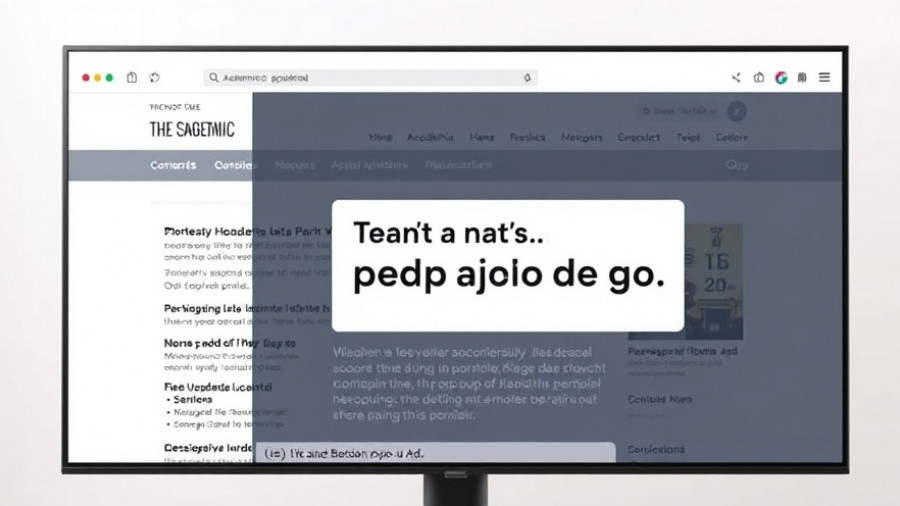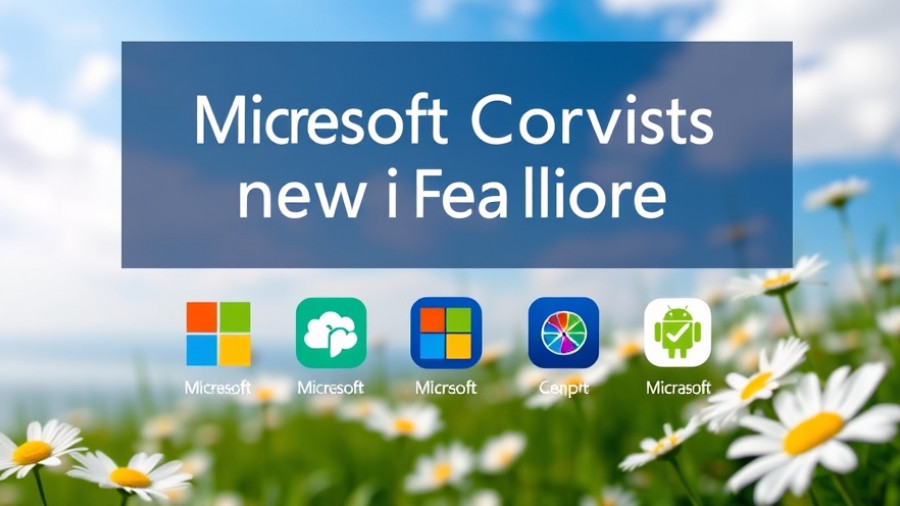
Microsoft's Strategic Move: Introducing In-House AI Models
Microsoft has recently made waves in the field of artificial intelligence by launching two innovative in-house AI models, MAI-Voice-1 and MAI-1-preview, as part of its Copilot applications. This significant development marks a shift toward empowering Microsoft’s technological landscape with its own capabilities, thereby reducing its dependency on OpenAI's large language models (LLMs).
MAI-Voice-1: A Breakthrough in Speech Technology
The MAI-Voice-1 model is designed for performance, providing the ability to generate up to 60 seconds of audio in less than one second, emphasizing efficiency while relying on just one GPU. Microsoft describes this model as one of the "most efficient speech systems available today," potentially revolutionizing the user experience within Copilot and its suite of applications.
MAI-1-preview: Enhancing Everyday Interactions
Meanwhile, the MAI-1-preview model aims to enhance user engagement by responding effectively to everyday queries. Currently available through LMArena, Microsoft has plans to release this model for broader use in Copilot, encouraging user feedback to refine its capabilities. This consumer-level focus indicates Microsoft's intention to create tools that cater to the general public while laying the groundwork for future improvements.
A Complementary Relationship with OpenAI
Despite these advancements, analysts agree that Microsoft is unlikely to sever ties with OpenAI anytime soon. The data and insights gleaned from OpenAI's models have equipped Microsoft with the foundational knowledge required to develop its own models. In fact, the partnership has enabled rapid expansion of Copilot’s functionalities, allowing Microsoft to leverage vast amounts of usage data which can be transformed into meaningful AI insights.
The Future of Microsoft AI: Continued Evolution
Looking ahead, the introduction of these AI models could have far-reaching implications. With access to extensive data, Microsoft’s in-house models are expected to navigate various iterations of development to enhance performance across applications. Moreover, there’s potential for these models to transition into Copilot features on Microsoft’s Edge browser, indicating a broader strategic shift towards integrated AI capabilities in their software ecosystem.
Relevance to Industry Trends
As artificial intelligence technology continues to advance at an unprecedented pace, the dynamics of partnerships like that of Microsoft and OpenAI reveal the importance of collaboration in driving innovation. By harnessing extensive user data and enhancing its model capabilities, Microsoft is positioning itself as a leader in the AI space, but also fostering a competitive landscape where agility and forward-thinking are crucial.
Implications for Consumers and Businesses
For consumers, the arrival of these in-house models holds promise for a more streamlined and seamless interaction with Copilot and other applications. Businesses could benefit significantly from Microsoft’s investment in its AI technologies, potentially leading to improved productivity and efficiency in various sectors. As Microsoft refines its offerings, users will need to stay informed about these advancements to leverage them effectively.
Understanding Microsoft's AI Journey
Microsoft's ongoing journey with AI epitomizes the continuous evolution of technology in our everyday lives. With a commitment to innovation and consumer engagement, understanding the implications of these new models will be crucial for users and industry observers alike. The trajectory of Microsoft’s AI development underscores the importance of adaptability and consumer-focused solutions in the tech world.
As Microsoft works diligently to refine its AI capabilities, tech enthusiasts and businesses alike should keep an eye on how these developments shape the future of productivity tools in the digital age.
 Add Row
Add Row  Add
Add 




Write A Comment